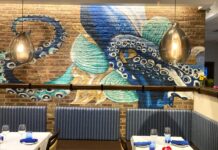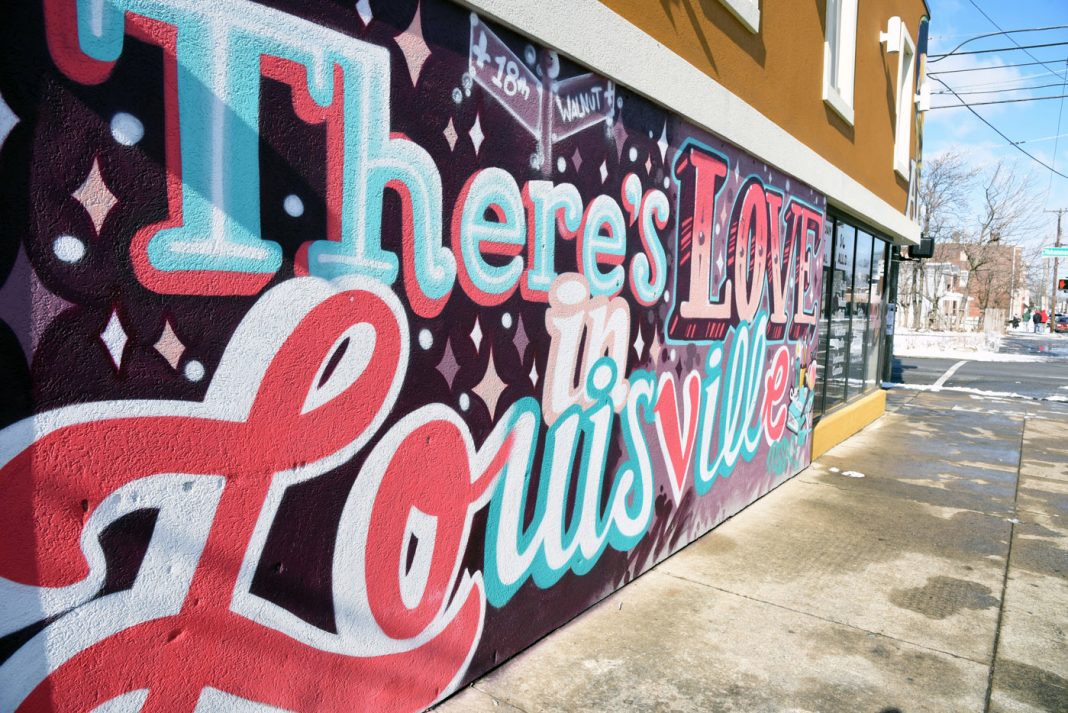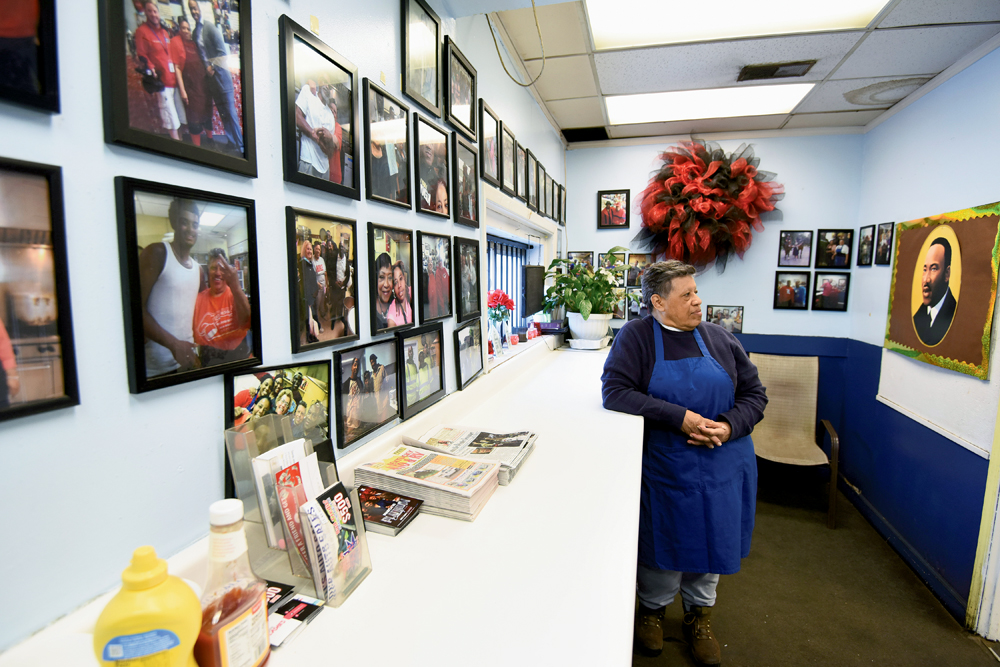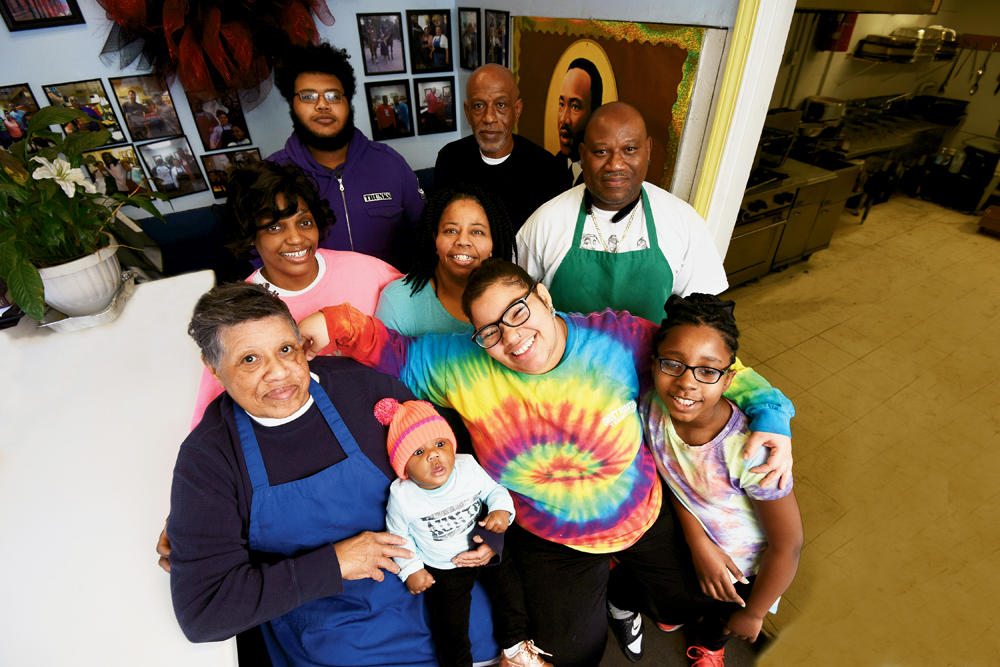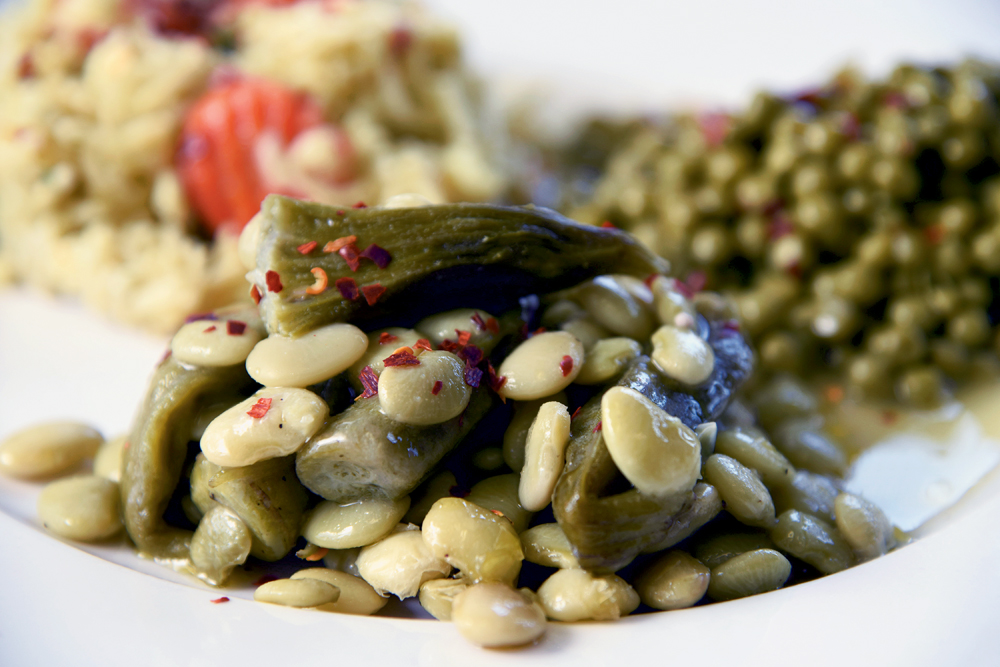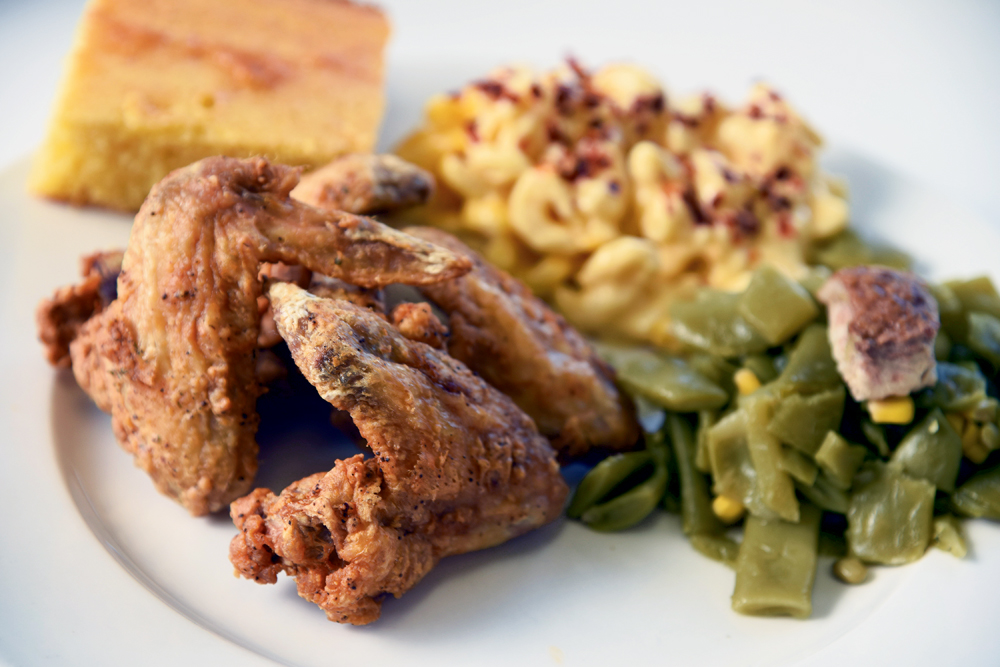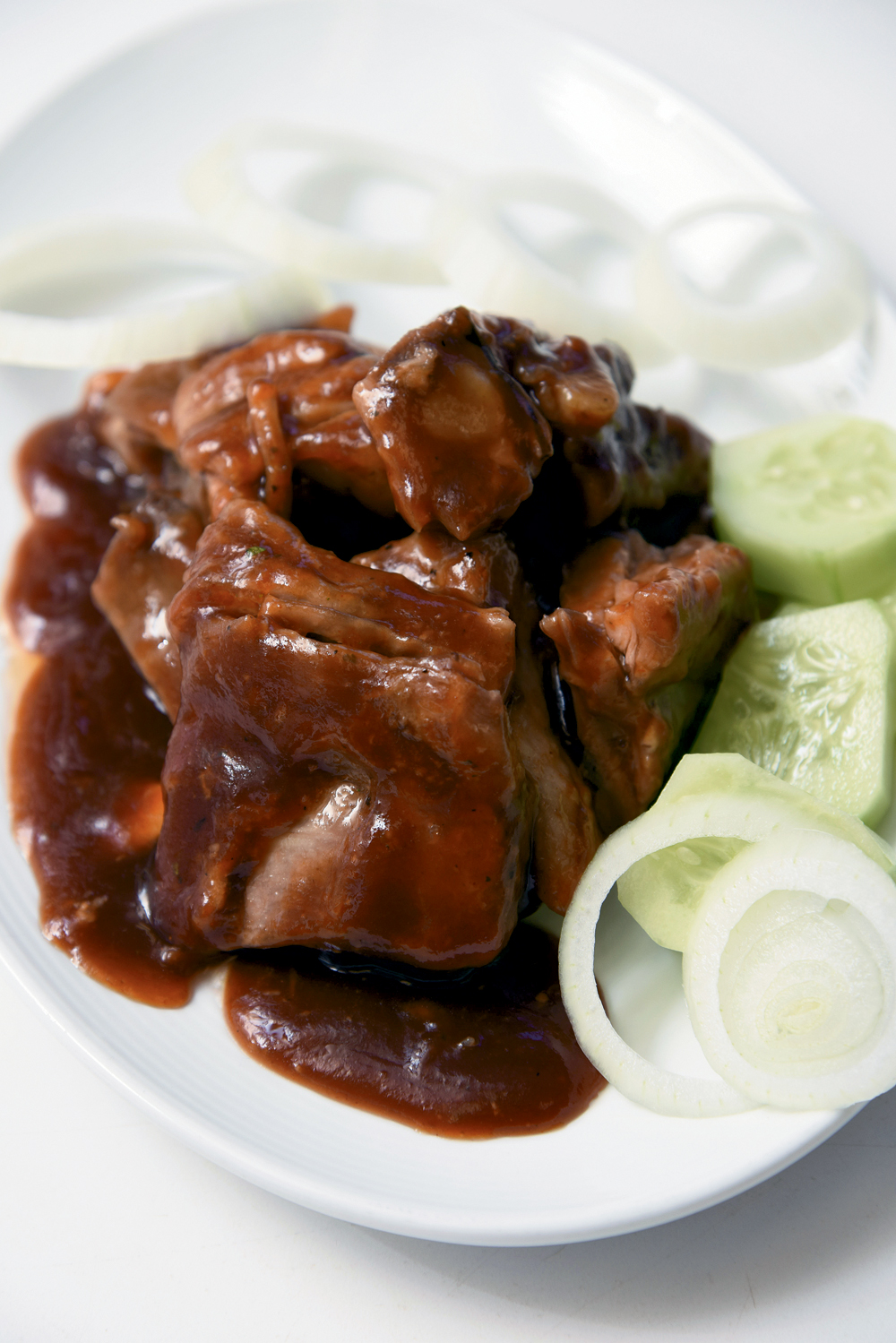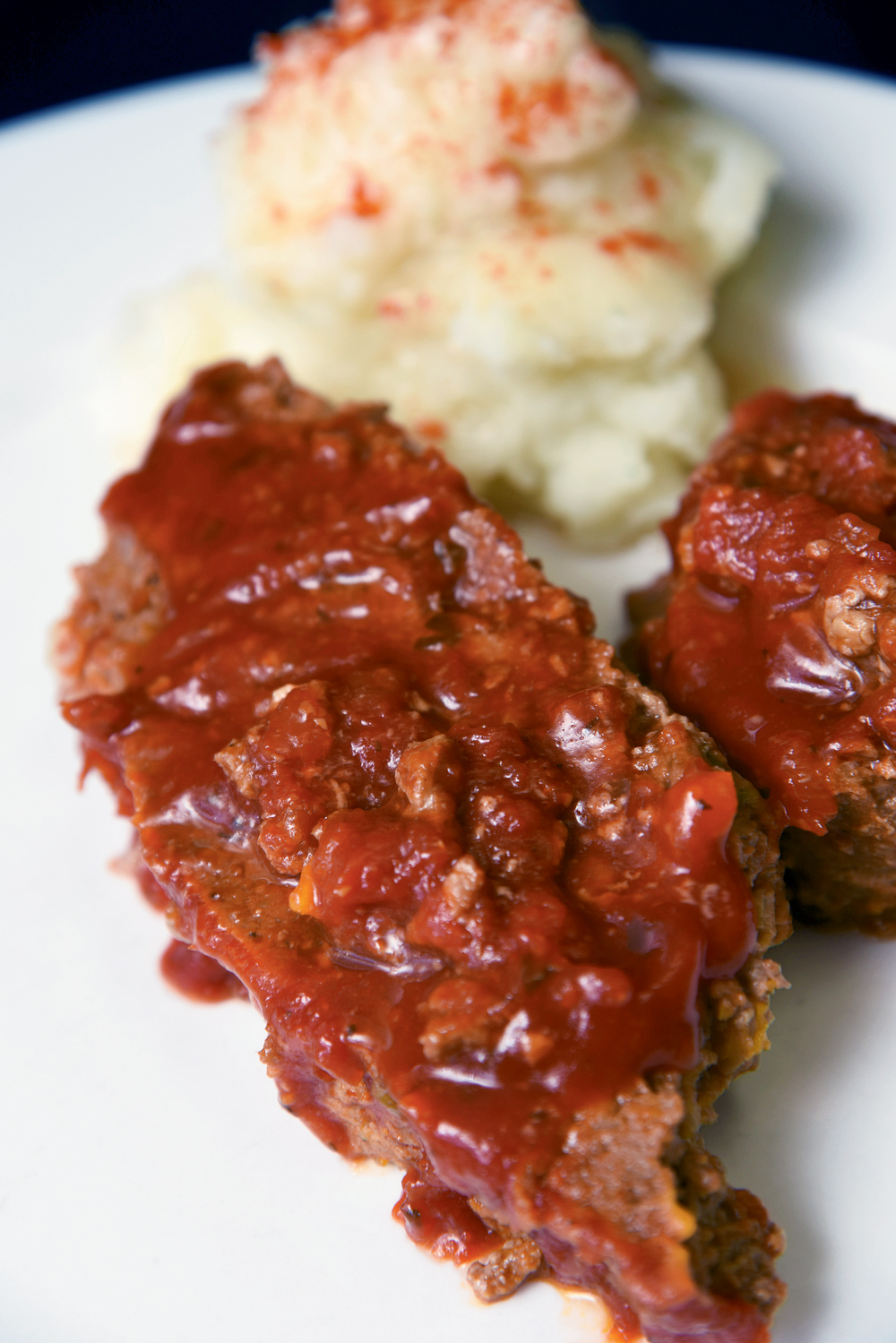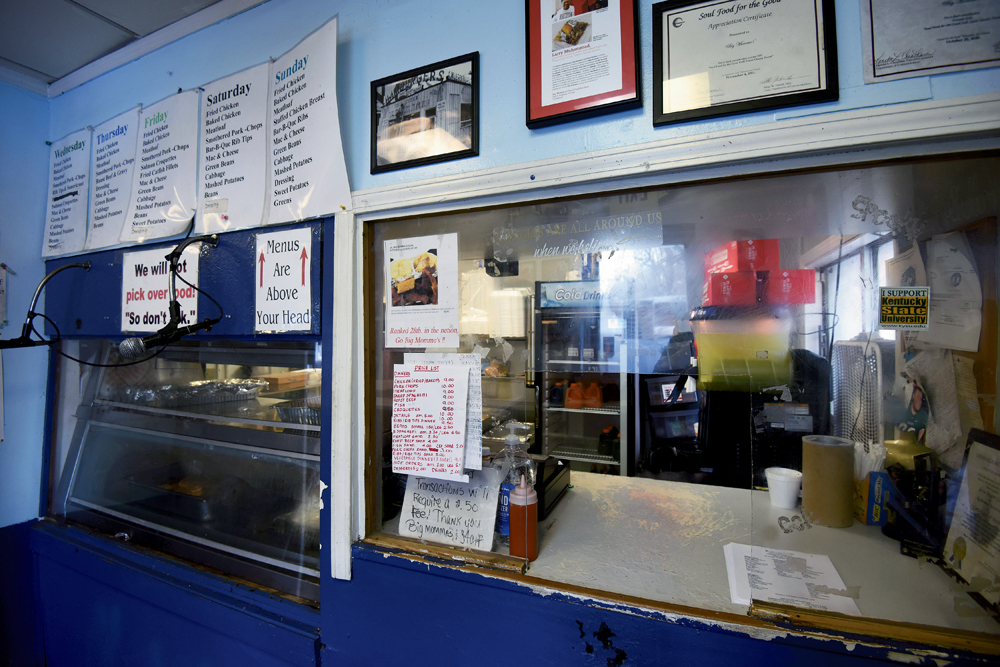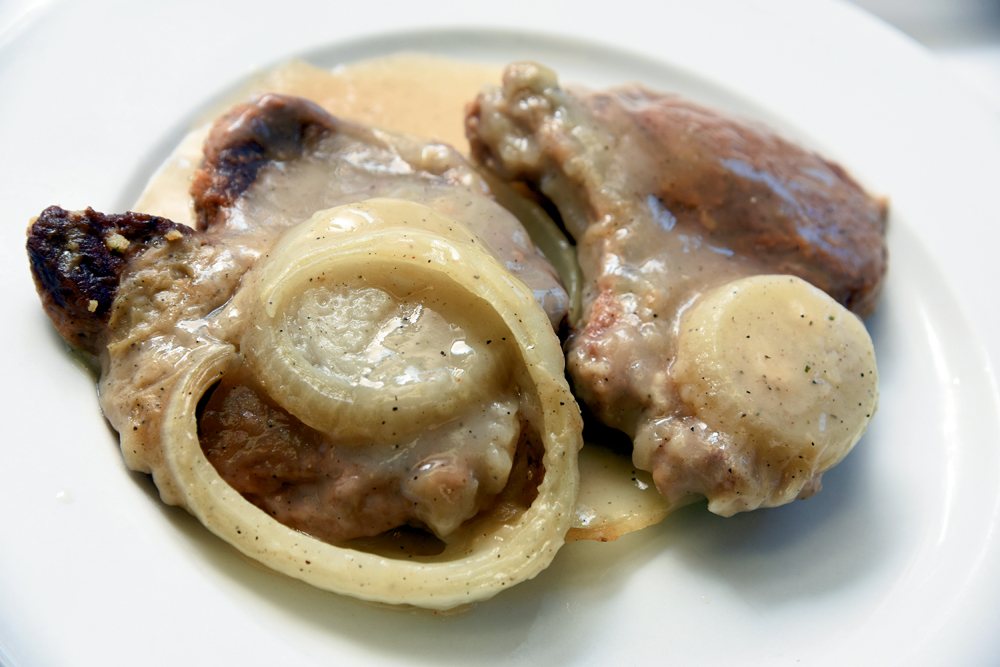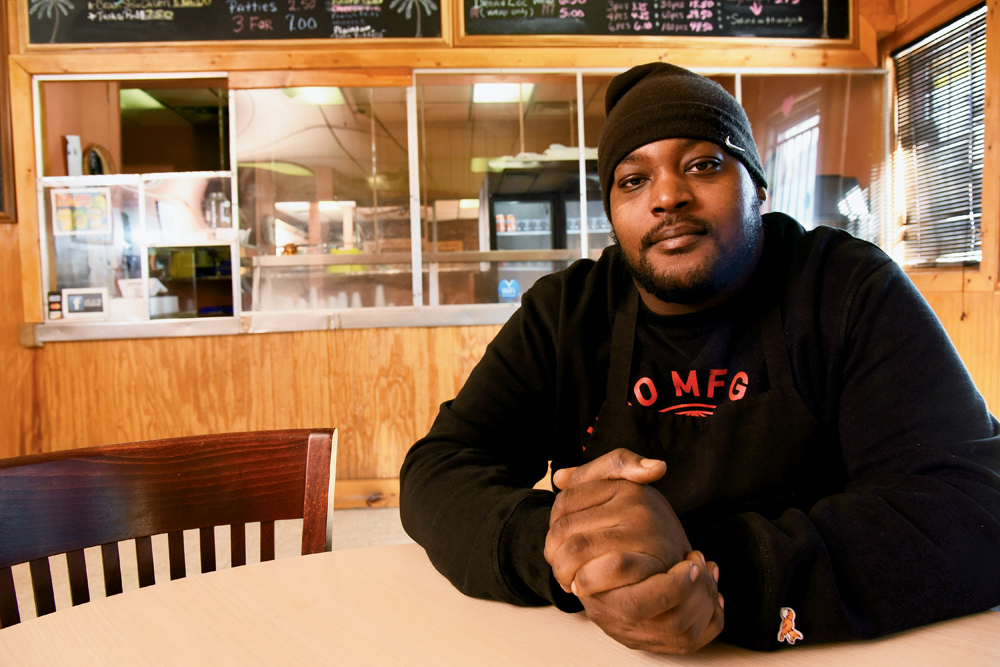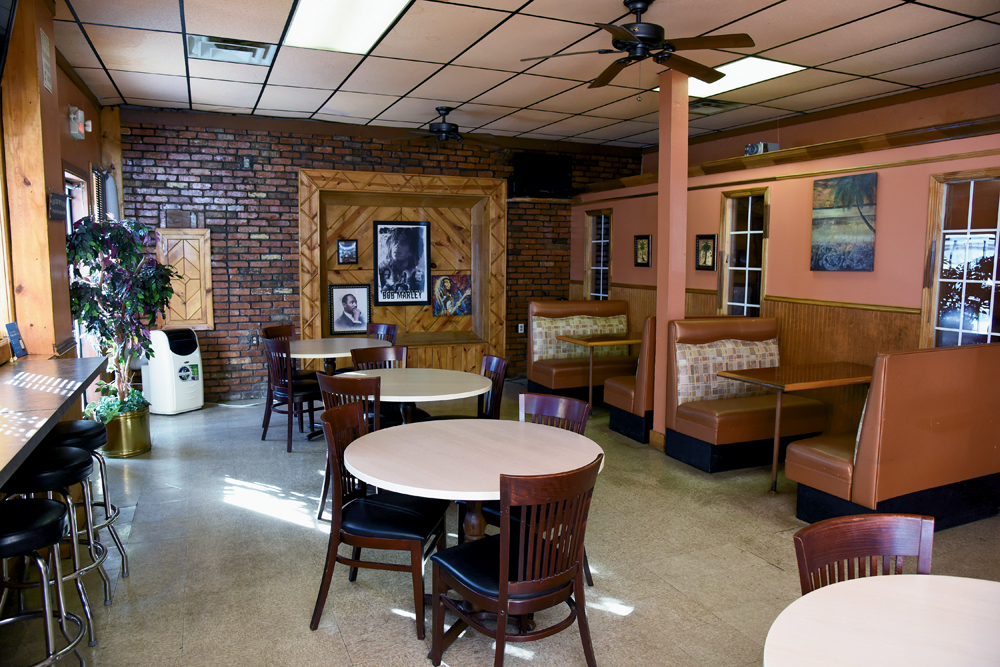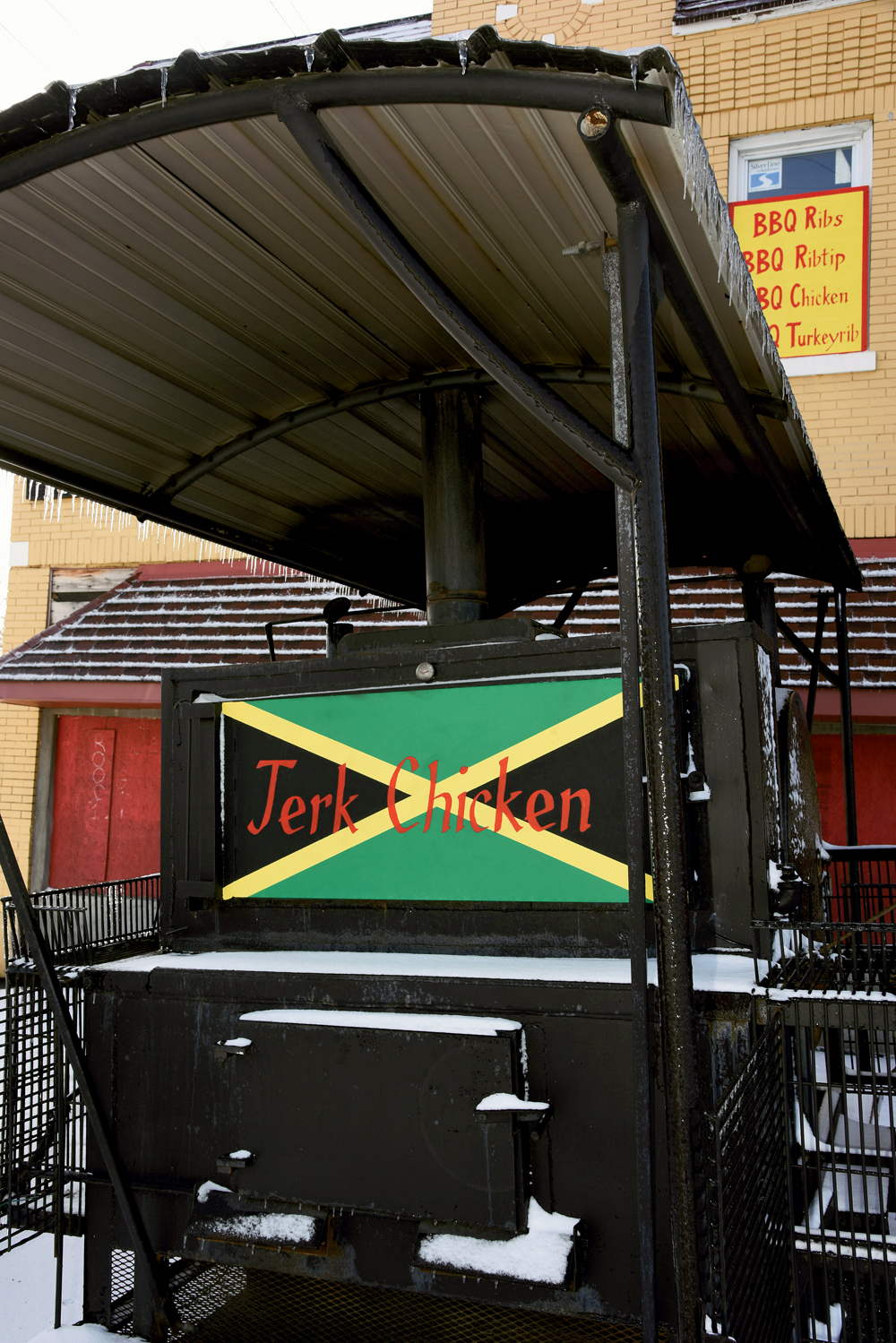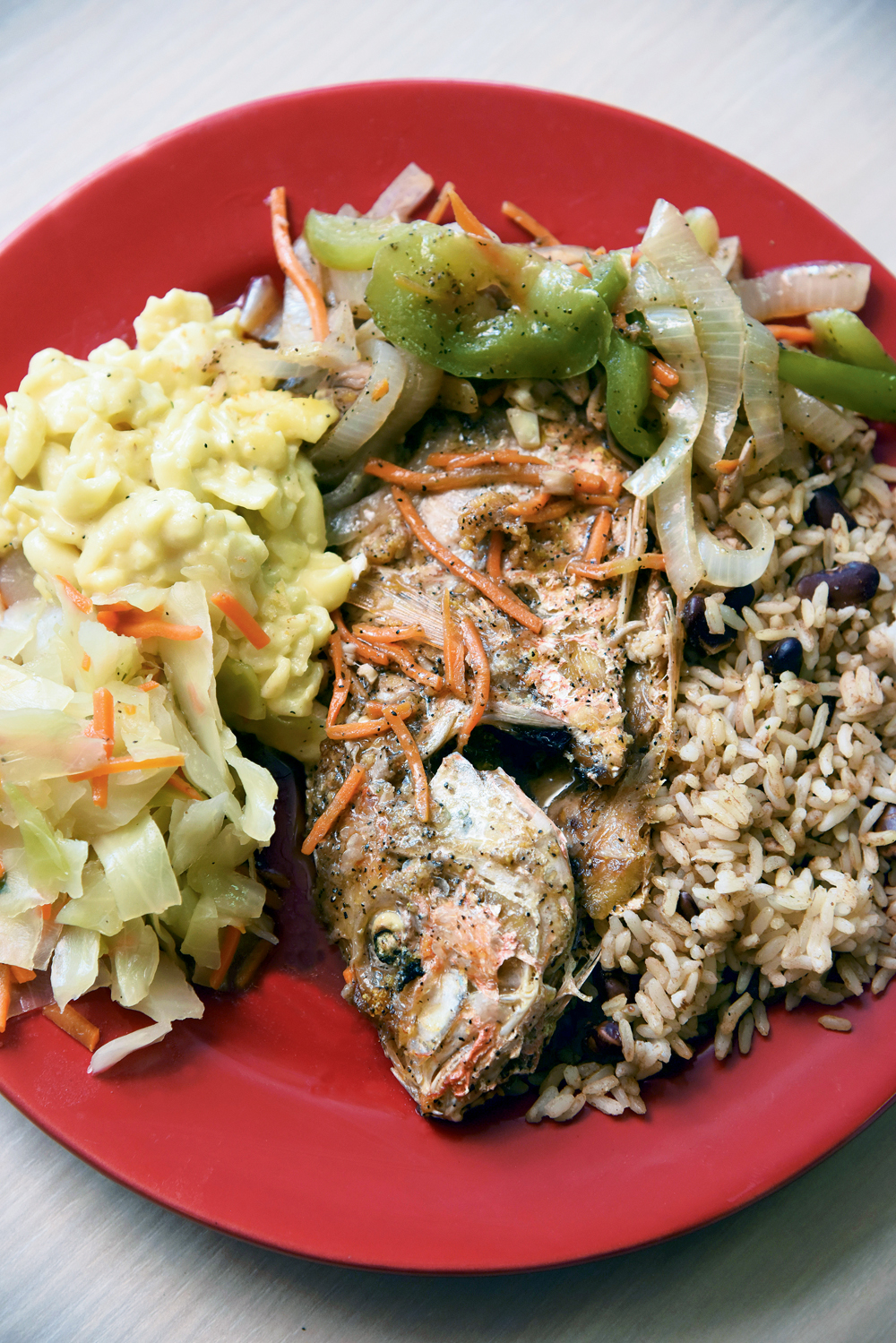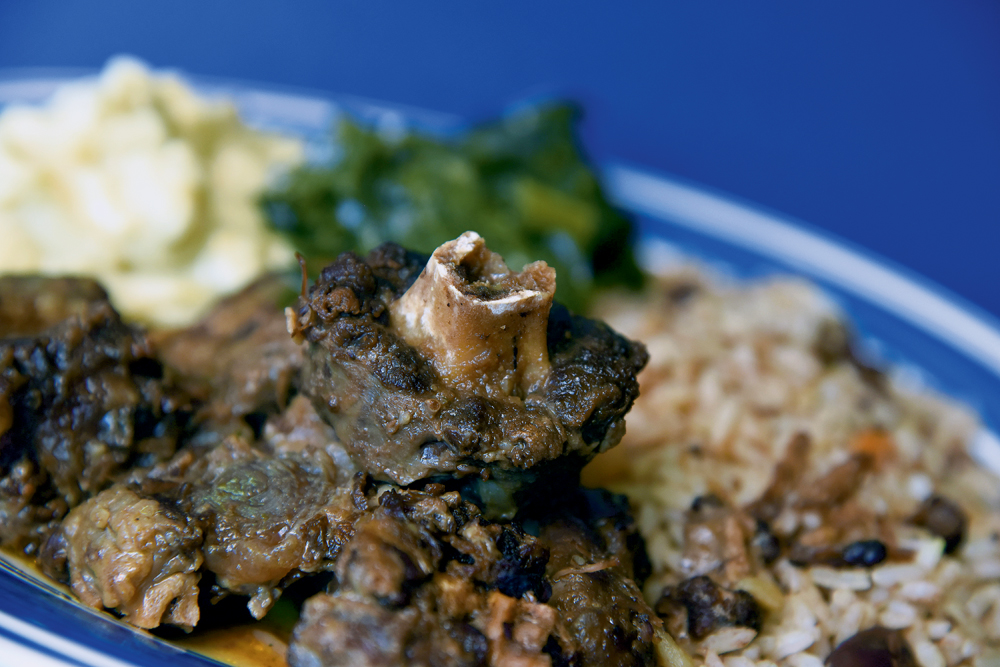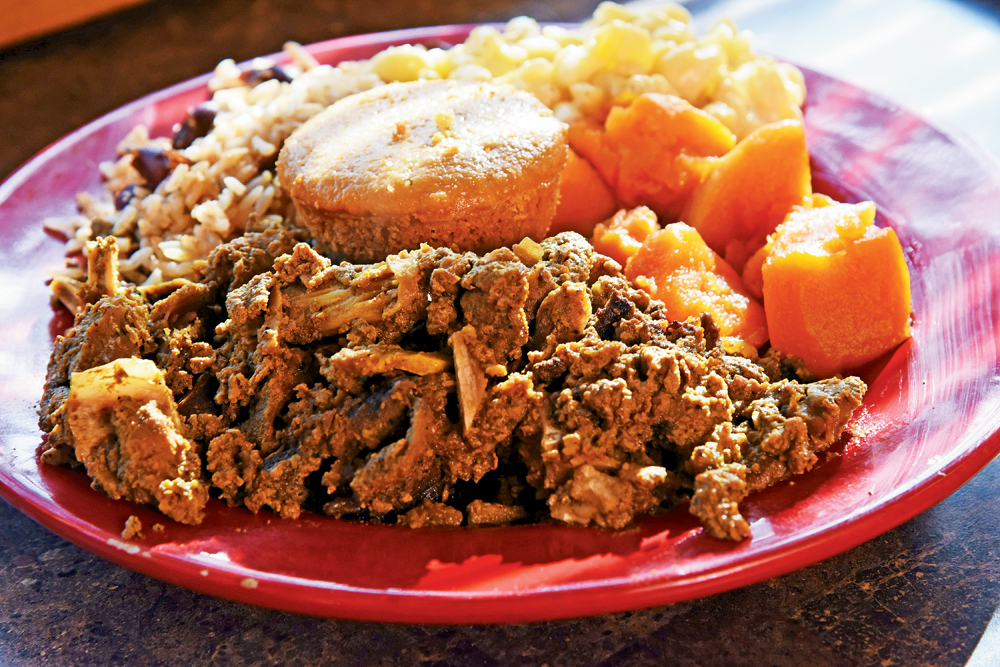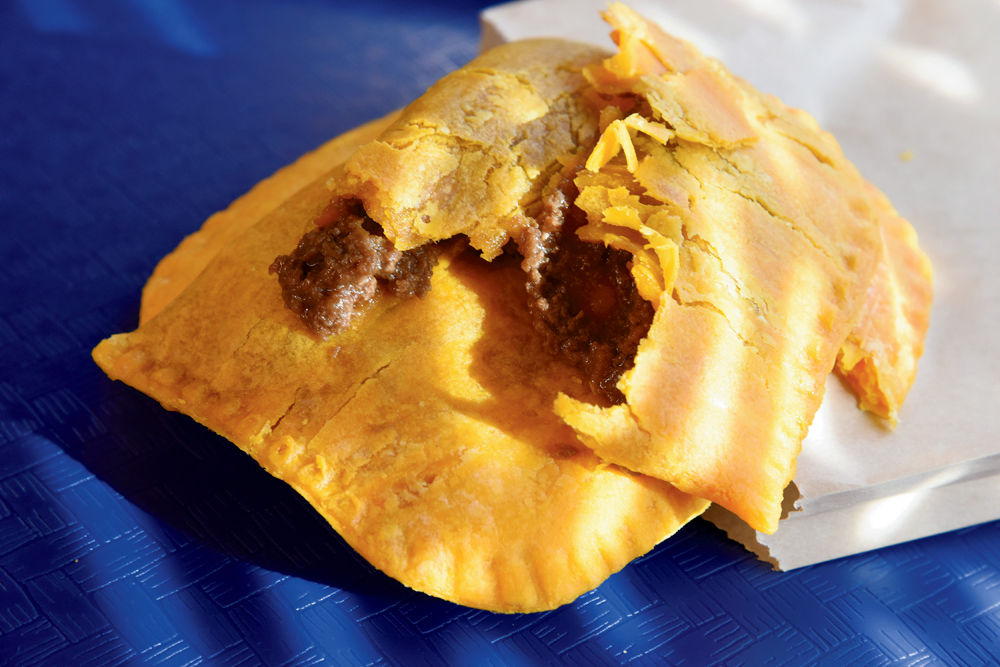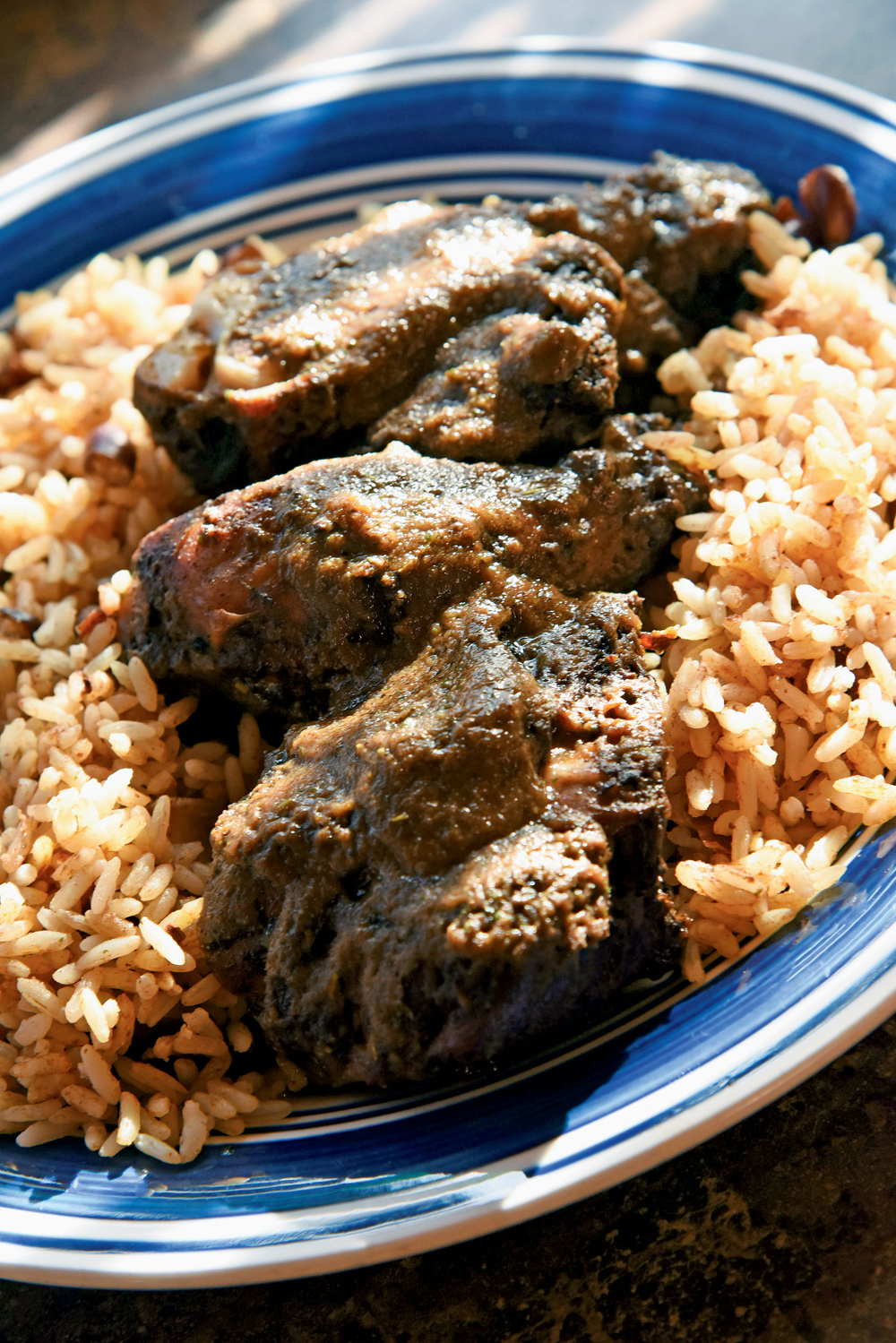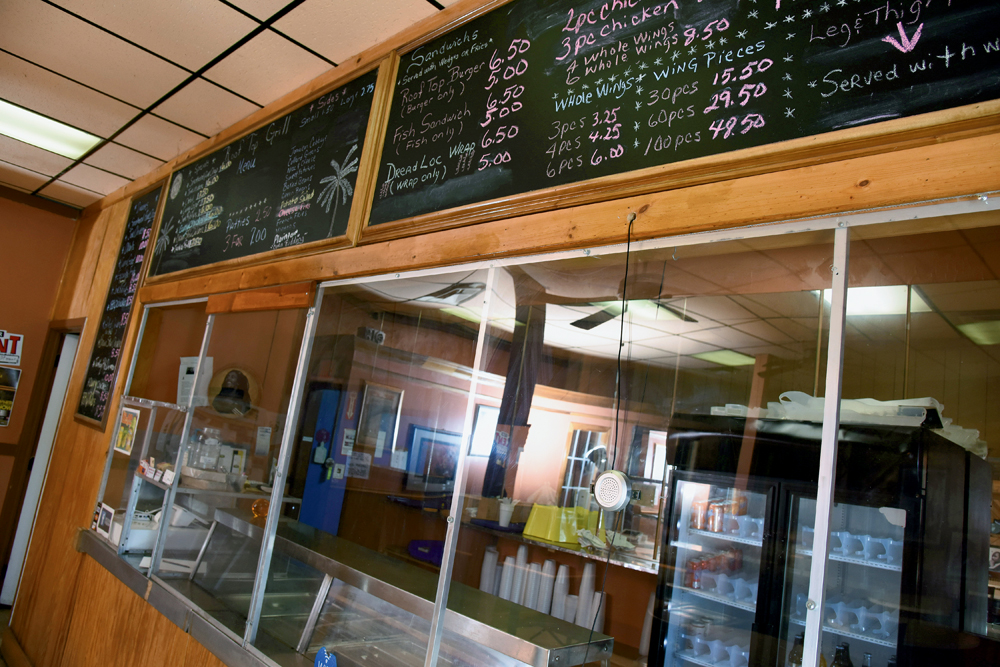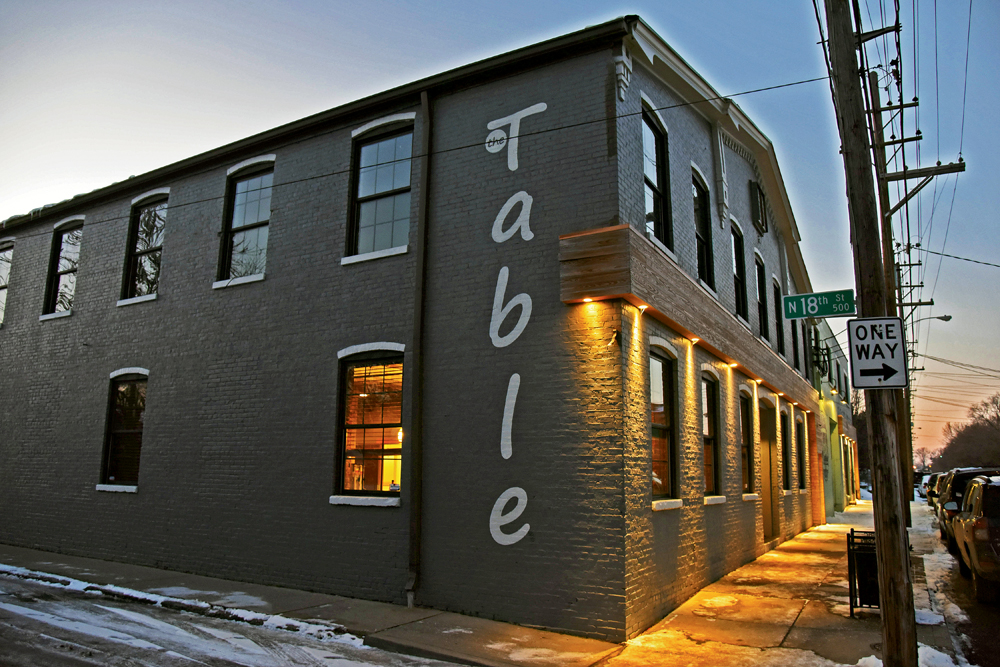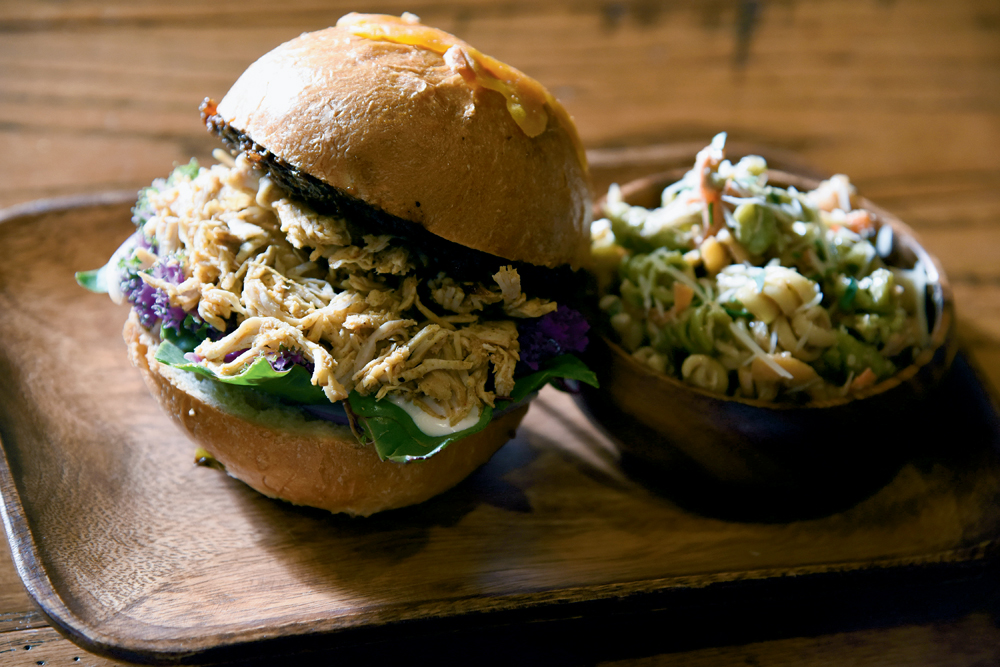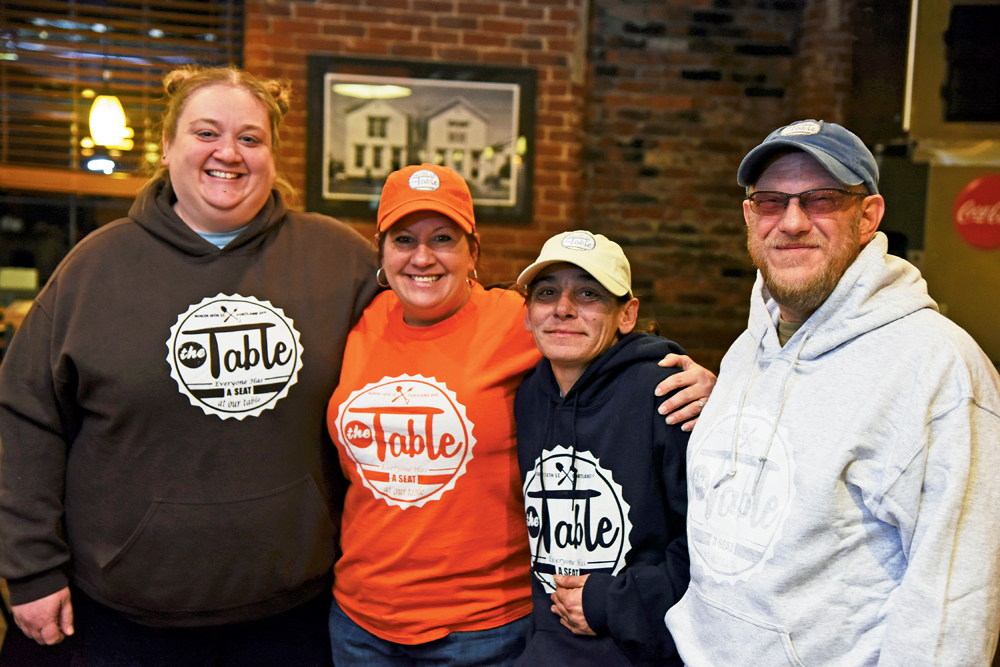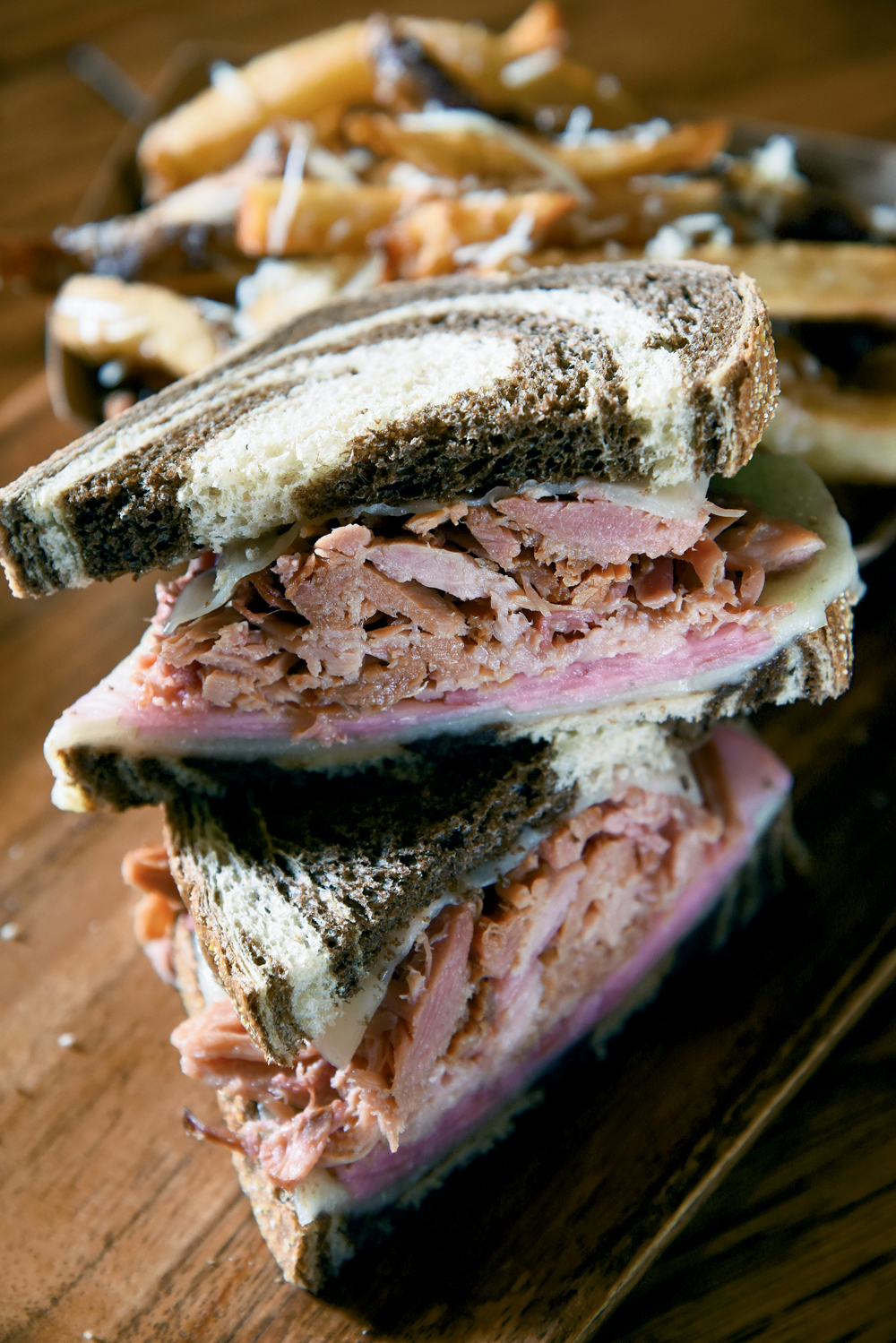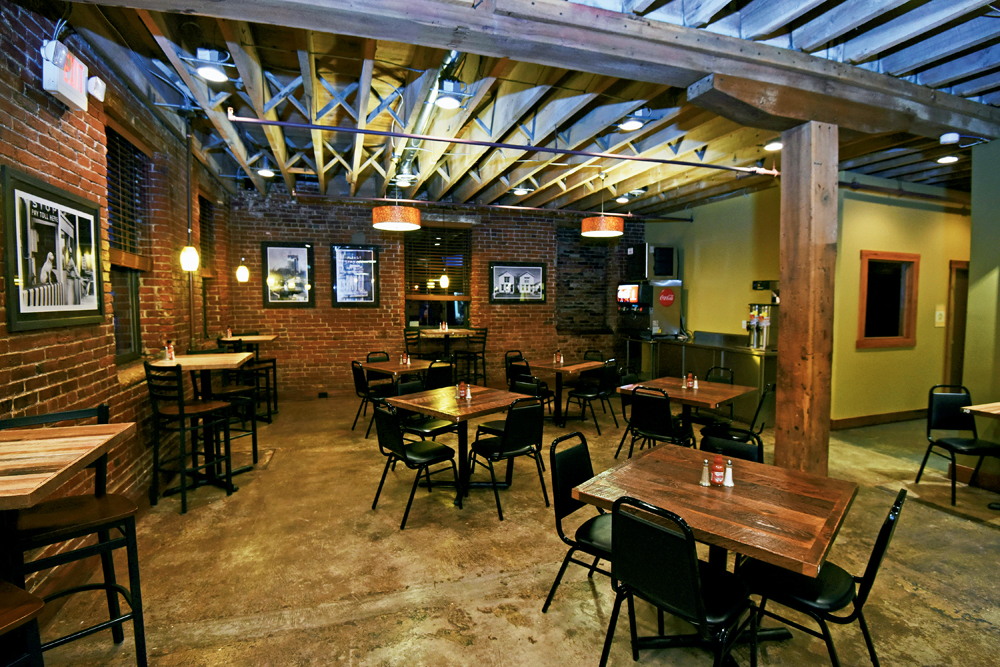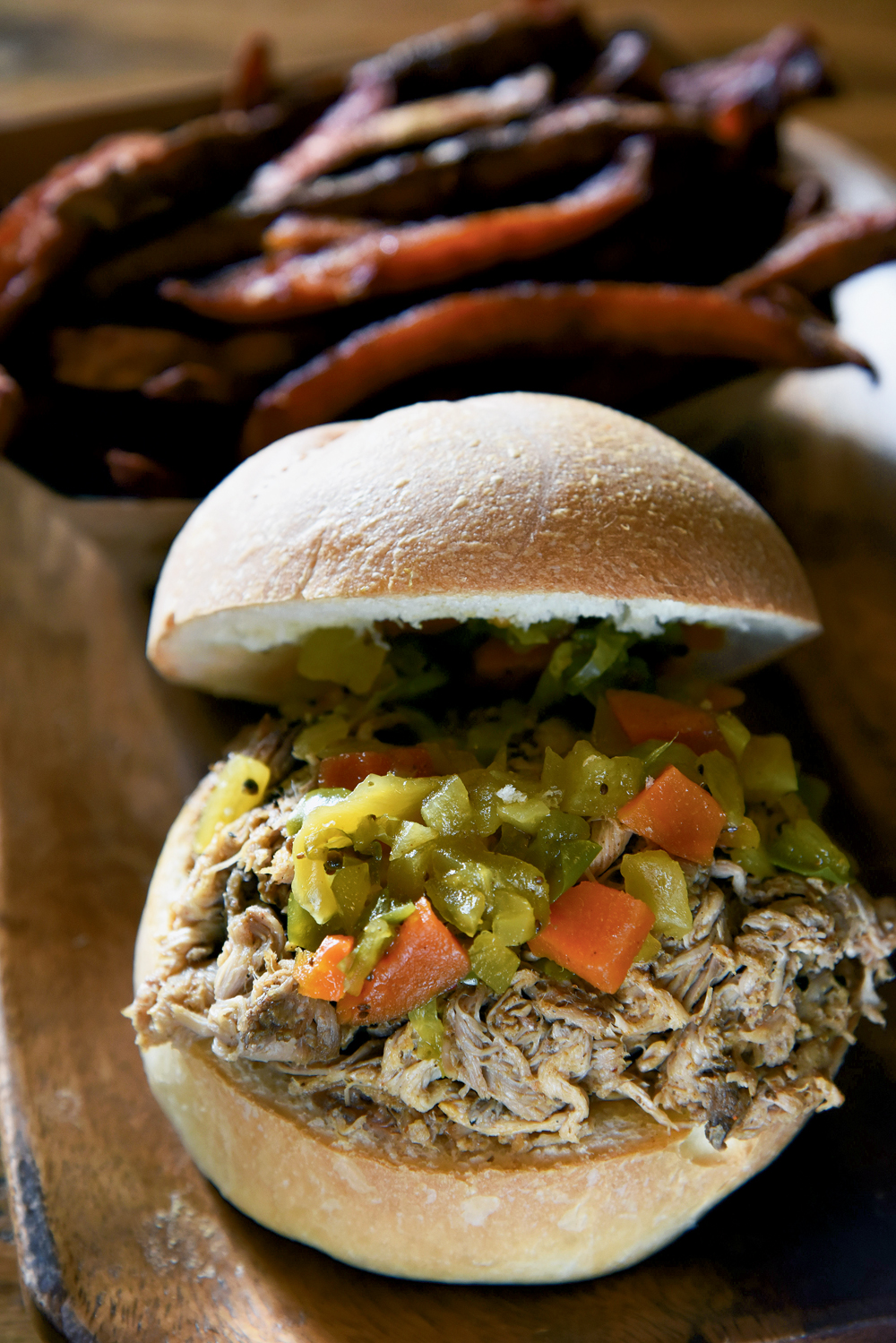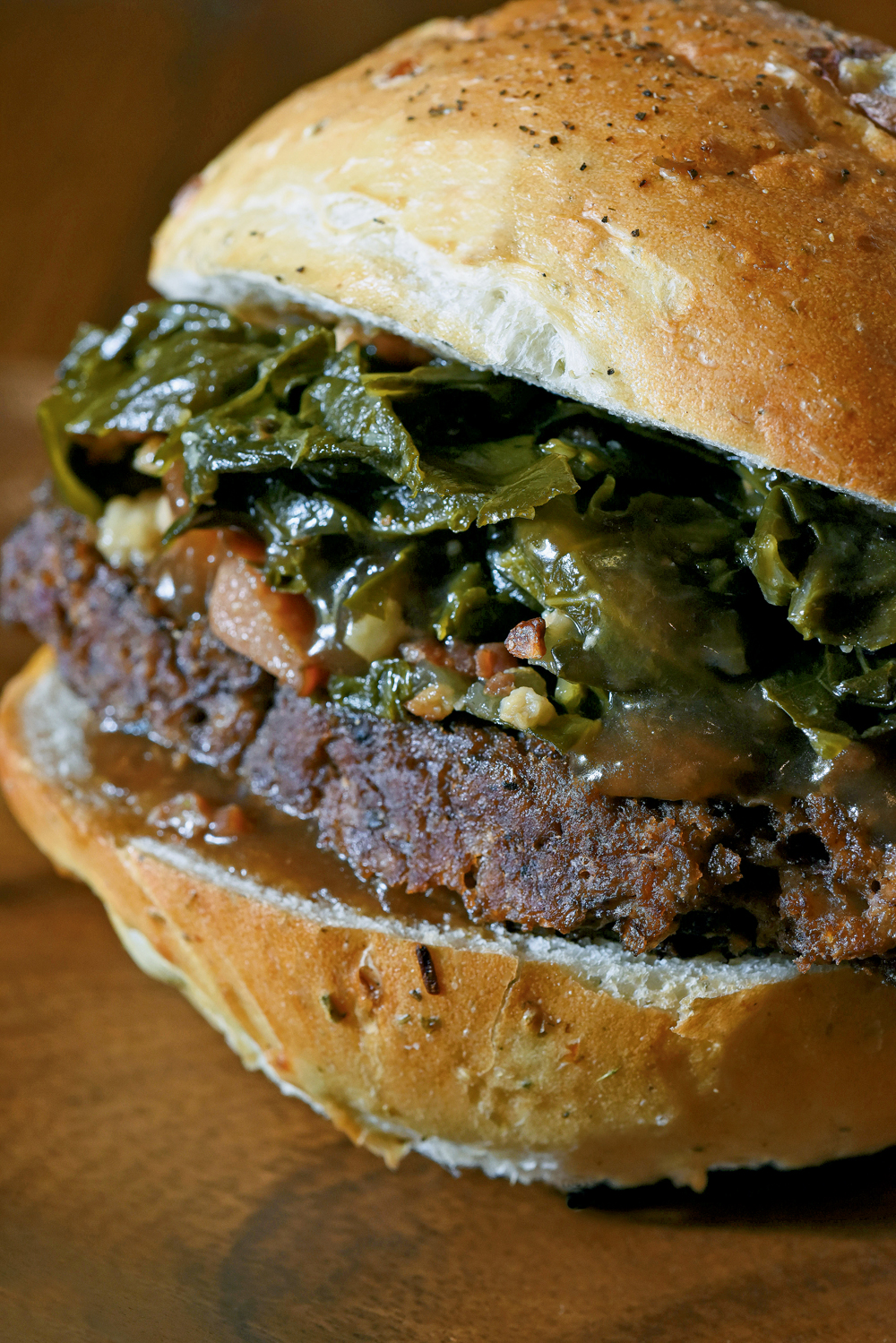There is something happening in West Louisville that should interest foodies all over the city. In this issue of Food & Dining we list 21 sit-down restaurants west of Ninth Street, by far the most since we began tracking restaurants in 2003. In the last 18 months alone, the number of these establishments has more than doubled with 11 new spots, five of which opened in the last few months. The most recent restaurants seem to be thriving, which should attract even more eateries as West Louisville entrepreneurs and community groups are fueling this culinary growth with new public and private investment in an attempt to transform an area known for negative media attention into one of Metro Louisville’s crown jewels.
West Louisville sits north of Algonquin Parkway and west of Roy Wilkins Drive, which many locals refer to as the “Ninth Street Divide.” Algonquin, Park Hill, Park Duvalle, Chickasaw, Shawnee, Portland, California, Parkland and Russell make up this area known to many as “The West End.” The area’s culinary scene has been hampered by a lack of economic investment for many decades, but that has changed in recent years.
Taste of West Louisville organizer Keisha Allen said the West End has always had a vibrant food culture, but it has been dominated by carryout restaurants, street vendors, and non-traditional venues like caterers working out of churches or even residences, which are not often counted in economic studies. Allen founded the Taste of West Louisville four years ago to highlight some of the places she personally frequented and to raise scholarship money for area students. In each new year, she has found herself fielding an increasing number of calls from vendors interested in the showcase.
“The first year I did the Taste of West Louisville, I had 11 vendors, and about 150 people showed up to sample the food,” she said. “That was at the Shawnee Arts and Cultural Center. We soon outgrew that space, and last year we moved the event to the California Community Center. I already have more than 20 vendors signed up for the 2018 Taste. This part of town is often forgotten when it comes to economic development, but I think things are changing and that has been good for the food culture.”
West Louisville was once a thriving community with a multitude of culinary choices, but racial segregation and intentional economic depravity sent the community in decline. The area was originally populated by wealthy and middle-class whites. In fact, Shawnee Park was legally segregated from 1924 to 1954. However, many of the white families began leaving the area after the Great Flood of 1937 put some of the West Louisville neighborhoods underwater. The exodus continued after War World II when the new American prosperity caused a stampede to the East End suburbs.
At that time, the center of Louisville’s African American community was downtown along old Walnut Street (now Muhammad Ali Boulevard). The Walnut Street Business District between Sixth and 15th Streets was home to many African American operated night clubs and restaurants like Wilson’s Restaurant, Buckhart’s, the Little Palace Café and Charlie Moore’s Café. These were popular spots that attracted both black and white customers. The city of Louisville began closing businesses on Walnut Street in the late 1950s as part of its Urban Renewal Program, which was supposed to redevelop blighted areas. African Americans were limited to living and opening businesses in West Louisville by an agreement between bankers and realtors — a practice known as Redlining.
Joe Hammond was able to move his nightclub and restaurant Joe’s Palm Room from 13th and Magazine Streets to 18th and Jefferson Streets in 1967 thanks to a small business loan. However, Hammond said in a 1979 interview that Urban Renewal “really had the effect of eliminating many black businesses that were operating at that time and … most of them were very profitable.”
By the time Dr. Martin Luther King Jr. was assassinated in 1968, West Louisville housed a black majority and was overcrowded. Even today, 75 percent of Metro Louisville’s African American population is located there. The King assassination led to riots that further eroded the West Louisville business base. Despite all that, a good sit-down restaurant could still thrive in West Louisville thanks to the remaining manufacturing base, which provided regular customers.
In 1969, Foster opened Franco’s Chicken at the corner of 18th and Jefferson streets. Foster sold his restaurant in 1971, only to buy it back three years later. He renamed it Jay’s Cafeteria. Its homestyle cooking attracted West Louisville residents, downtown office workers and employees at the nearby Philip Morris plant at 18th and Broadway. Foster operated Jay’s for 35 years, and it became an institution.
“I served people from all walks of life – all the big-time boxers, all the entertainers (including Jerry Lewis), all the governors, and county judges. I’ve met a lot of people,” Foster remembered.
Business was so good that Foster built a new, larger home for Jay’s just a few doors down from the original location at 1812 W. Muhammad Ali Blvd., but the 1999 closing of the Philip Morris plant proved crippling to Jay’s and many other West Louisville restaurants. Foster filed for bankruptcy and closed the restaurant in 2002.
“I just couldn’t handle the debt load with the new building,” he explained. “The economy was sluggish, and when Philip Morris closed, I lost a lot of regular customers with good paying jobs. That was a hard time to be in the restaurant business,” admitted Foster, who now operates Franco’s Restaurant and Catering at 3300 Dixie Hwy in Shively.
As sit-down restaurants began to disappear without others taking their place, fast food came in to fill the gap. The Community Farm Alliance (CFA) declared West Louisville a “Food Desert” in 2007, because it is difficult to buy affordable or good-quality fresh food in the area. According to the CFA’s “Bridging the Divide: Growing Self-Sufficiency in Our Food Supply,” the 2.8 mile stretch of Broadway has “the highest concentration of fast food restaurants in the state … on average, one never has to walk much more than 1/10 of a mile to find a cholesterol-packed hamburger or its equivalent on Broadway.”
The designation as a food desert is one of the reasons for the recent increase in sit-down restaurants in West Louisville. Portland’s Church of Promise founded The Table Café two years ago to deal with food insecurity in the neighborhood. In addition, developer Gill Holland of Nulu fame has pledged more than $35 million to bring retail shops, restaurants, and mixed-use housing to the Portland neighborhood. One of the first developments from this investment was the Tim Faulkner Gallery, home to McQuixote Books & Coffee, which serves sandwiches and baked goods.
St. Stephen’s Baptist Church — home to the largest African-American congregation in Louisville — rents space in its Family Life Center to Chef Jerriel Bell for his restaurant Frederick’s, which began serving five nights a week earlier this year in the California neighborhood. Sweet Peaches 2 Roll has one location inside the Russell neighborhood’s Nia Center at 2900 W. Broadway and another at 1800 W. Muhammad Ali Blvd., the original Shawnee site of Jay’s Cafeteria. Chef Space — an incubator for new restaurant concepts — occupies the former second location of Jay’s at 1812 W. Muhammad Ali.
West Louisville foodies are hoping that other economic development in the area like the following leads to even more sit-down restaurants: metro government is using a nearly $30 million HUD grant to redevelop the Beecher Terrace Housing Project and attract more investment in the Russell neighborhood. Passport Health Plan has already announced it will build a new headquarters and health campus at 18th and Broadway — the site which Philip Morris Plant left vacant in 1999. The YMCA is building a new campus just across the street.
With all of these exciting advancements, it sounds like the “Ninth Street Divide” is becoming more of a cultural gateway. In addition to curious locals, tourists, and foodies, all the employees at these new business developments will be hungry, and this issue of Food & Dining features three inspiring restaurants that are most likely to serve them and may have had an impact on location choice: West Louisville’s second oldest restaurant, Big Momma’s Soul Kitchen; Roof Top Grill, which started selling from a tent and now runs two locations; and non-profit The Table Café, which operates on a pay-what-you-can afford model.
The Food Does the Talking at Big Momma’s Soul Kitchen
Jessie Green is an anomaly in today’s celebrity-obsessed culture. Green didn’t want any kind of fame, but the 74-year-old has found it thanks to the popularity of her restaurant, Big Momma’s Soul Kitchen. In addition to receiving glowing reviews in practically every publication in Louisville, Big Momma’s was called “a true oasis of lovingly prepared home cooking that delivers great taste at a great price” on ABC’s Nightline after two correspondents stumbled into the place when they were in town reporting on a school desegregation lawsuit in 2007.
Big Momma’s Soul Kitchen – 4532 W Broadway, Louisville, KY. (502) 772-9580
Sheryl Fox, Green’s daughter and Big Momma’s manager, described her mother as a reluctant culinary star. Fox explained, “Momma’s a behind the scenes type person. She don’t like no attention. Not too many people even know her name unless they go to church with us or they grew up with her. The thing is everybody wants to see her when she goes out somewhere, because they don’t think there is a real Big Momma, even though she is at the restaurant every day.”
Green is so press adverse that she has refused to help publicize her own community benefits. For the last 10 years, Big Momma’s has given away more than 1,000 dinners on Christmas Day. Last year, Fox invited several television news crews to document the holiday event without telling her mother for fear that the older woman might not show up if she knew about it. In fact, Green only agreed to answer questions for Food & Dining in Big Momma’s kitchen so she didn’t have to stop working.
“I just started this restaurant to see if the cooking would go over. I really didn’t want to get into this (media) stuff. Nobody cares what I have to say anyway. Just tell them to come out and try the food,” she said.
Big Momma’s Soul Kitchen is a single-story white-washed building located near Shawnee Park. It is basically a carry-out restaurant, although there is some limited counter seating inside and a patio with picnic tables outside. The walls of the small front room are covered with pictures of celebrities who have visited the restaurant: touring comedians, political figures, and lots of athletes. Green is a big University of Louisville sports fan, so there are pictures of noteworthy Cardinals like Heisman Trophy winner Lamar Jackson and former basketball player Russ Smith.
Patrons order through two microphones placed in front of a plexiglass-covered wall.
There are daily menus hand-written on poster boards that detail the day’s offerings. Big Momma’s always has staples like fried and baked chicken, meatloaf and smothered pork chops as well as sides like mashed potatoes, macaroni and cheese, beans and cabbage. But each day the restaurant features additional specials like oxtails, croquettes or catfish and extra sides like greens, sweet potatoes or green beans. Every meal is under $10 and comes with a square of sweet cornbread.
Green arrives at 6:30 a.m. to start prepping the food that is all made from scratch and served during their open hours — noon to 7 p.m. Wednesday through Sunday. Most of Big Momma’s Soul Kitchen’s nine employees are related to the owner in some way, but Green is involved in every aspect of the cooking process, because there are no recipes for them to follow.
“This lady does not have to measure anything. She just knows how much to use, and she is very particular about everything. The sweet potatoes must be cut a certain way and she does not like any stems in her greens,” Fox added.
Big Momma’s serves 100-200 customers a day, mostly at lunchtime. Sundays are the busiest day because hitting Big Momma’s after church has become a tradition for many congregations in West Louisville. Fox said the line usually winds around the building, but it moves quickly because most of the regulars already know what they want. In addition to the restaurant traffic, the restaurant also does catering and delivers food orders to nursing homes and shut-ins.
“We are a resource for people who take care of their parents but also work full-time. They can set up something with us and not worry about making meals for two households. Some people tell us their parents won’t eat anything but Big Momma’s,” Fox said.
New diners are constantly discovering the restaurant through word of mouth, social media or through the Greater Louisville Convention and Visitors Bureau. Some people are initially hesitant to visit the restaurant, because it’s located in what is perceived as a “high crime” neighborhood. But once they try the food, they keep coming back. There are Derby visitors that make Big Momma’s a regular part of their itinerary, and the restaurant has regulars that come from as far away as Oldham County because of the food.
Green learned how to cook from her mother, Pearl Bryant, who worked at the old U.S. Marine Hospital in Portland. She was the third of Bryant’s 13 children. “I used to cook for my sisters and brothers when we were young, ‘cause my mother worked all the time,” Green remembered.
When she became an adult, Green worked in a factory that made elevator parts and had two children, Fox and son Freddy Green, who are now ages 52 and 51, respectively. She picked up the nickname “Big Momma” from the kids in the Shawnee neighborhood. Even then, Green was known for her cooking, which was mainly done at King Solomon Baptist Church (where she still worships). Her food was so popular that Green started catering for other members of the congregation and eventually selling plate dinners out of her home.
Freddy was the one who convinced his mother to start Big Momma’s Soul Food Kitchen in 2004. A longtime employee of the Ford Motor Company, he found the restaurant’s location at 4532 W. Broadway. He is a co-owner of the restaurant and works in the kitchen when he’s not at Ford. Green wishes they had thought of opening a restaurant earlier.
“I waited too long,” she mused. “It’s been busy like this ever since we opened. That’s a lot of work at my age.”
Fox doesn’t think her mother will ever stop cooking of her own accord. She said when the family rented two chateaus for a vacation in Gatlinburg, Tennessee, a few years ago, Green got up every morning to cook for both houses. However, Green claims this was done out of necessity.
“Freddy cooks a little bit, but Sheryl can’t cook,” she said. “Really, nobody in my family likes to cook. They all come to my house and eat just like the customers at my restaurant.”
Roof Top Grill Brings the Flavors of Jamaica to the Bluegrass
Courtney Johnson started working with his father when he was just 9 years old. The elder Johnson, also named Courtney, has been a carpenter for most of his life. He taught his son the attention to detail and mechanical skills required for professional woodworking. However, Courtney Jr. was more interested in what happened after they got home than in measuring boards and working with saws.
Roof Top Grill – 708 Louis Coleman Jr. Dr., Louisville, KY (502) 785-4069
Courtney Sr. grew up in Brown’s Town, a municipality of St. Ann’s Parish, Jamaica. The 57-year-old came to America at 18, living in New York City and Florida before migrating to Louisville. His five children — four boys and a girl — grew up in a house full of the aromas of stewed turkey, oxtails, beef patties and other Caribbean delights. Courtney Jr. is the third oldest son and directed the same passion his father applied to woodworking into learning to cook Jamaican cuisine.
“I never get tired of eating or making this food,” the son explained. “My father taught me the recipes. He is the one that gave me the goal to master them. He is a loving father, but he is a strict man. He taught me work, work, work. It was not easy, but now I can cook this food better than him.”
Now 28-year-old Courtney Jr. is still working with his father. After he graduated from Doss High School, they began grilling and selling food in front of a building the family owned at 708 Louis Coleman Jr. Drive. They originally sold from a tent, but they opened the Roof Top Grill brick and mortar in 2012. Late last year, a second location of the Roof Top Grill appeared in Old Louisville near the old Rudyard Kipling building at 414 W. Oak St.
The menus are the same at both Roof Top Grill restaurants, but the clientele is a little different. The original location is a gathering spot for West Louisville residents, but the new one is located between the University of Louisville and Spalding University, so it attracts a lot of students and faculty as well as Old Louisville residents. The space seats 60 and has a full bar that will eventually offer Jamaican beers and other drinks. There is no tableside service here either for now, but that may be an option in the future.
The name Roof Top Grill came about because when the Johnsons started they had a grill on the second floor of the Louis Coleman location. They have been quizzed about the restaurant’s name so many times now that they are both determined to one day own a rooftop restaurant just so people will stop asking about it.
The inside of the original location is painted bright red and features elaborate woodwork, including a beautiful mantelpiece in the back of the restaurant, all courtesy of Courtney Sr. However, his son does all the cooking at this location while his father handles the kitchen at the new location. The Louis Coleman Drive restaurant has four tables, two booths and counter seating for those wishing to dine-in — enough to fit about 40 people. There is no tableside service; patrons order at a wood-paneled window where blackboards display the regular menu and specials in colored chalk.
Most entrees at the Roof Top Grill are under $10 and come with two sides. The most popular dishes are the jerk chicken, oxtails, and the Escovitch Fish, which is like ceviche. It comes in a tart, spicy and slightly sweet sauce. Sides include Jamaican cabbage, plantains, fried dumplings and coco bread (a Jamaican style bread made with coconut). The specials mostly come on top of rice and beans, but they are a few dollars cheaper than the regular entrées.
Initially, it was hard for father and son to get people to try the Jamaican food, but Courtney Jr. said once someone eats it they become a regular customer. The restaurant also serves regular soul food items like fried chicken and even hamburgers, but Courtney Jr. believes the Jamaican offerings are a little bit healthier than other options available in the neighborhood.
“Our food is leaner because we do things a little different,” Courtney Jr. said. “For example, smothered pork chops are usually fried and then covered with gravy. We stew ours with vegetables and then put spices on them. And we don’t put meat products in our side orders at all. The big difference between American and Jamaican food is the spice. I can cook like they do in Jamaica, but I usually tone it down for people unless they ask for it the authentic way.”
Both locations of the Roof Top Grill play reggae music in the background and feature several pictures of reggae singer Bob Marley, another native of St. Ann’s Parish. Another thing they have in common is that they are staffed by family members or people close to the family. The Johnsons’ goal is to ideally and eventually have a series of Roof Top Grill locations operated by their family members.
“Most people on my dad’s side of the family, they seem to have a knack for cooking and carpentry. I have uncles in Atlanta and New York that do catering. It is just something that is in our blood,” Courtney Jr. said. “There is no reason we can’t have Roof Top Grills all over the city or even the state. My younger brother and sister help me out. I would love for them to one day have their own restaurants like I do.”
Courtney Jr. grew up in West Louisville and said it was important for him that the first restaurant be located there, because the area does not have many sit-down options besides fast food restaurants, which he calls “fake food.” Now that the Roof Top Grill is in Old Louisville — which also needed more food options — he wants to target similar neighborhoods when he and his father do decide to expand.
His thoughts about the future include his 8-year-old daughter Madison Johnson. She didn’t like the Jamaican food at first, but now she is a big fan of the Brown Stewed Chicken. Her father is not trying to pressure her, but he would love it if she was to become the third generation of the Johnson family to serve food from St. Ann’s Parish to Kentuckians.
“She hasn’t started cooking, but I keep her with me all the time. She might start picking up a thing or two. You never know,” he said.
The Table is a Restaurant With a Mission
The Table Café is in a renovated, multi-story warehouse known as the Promise Building at 1800 Portland Ave. Rather than being a capitalist venture like most restaurants, The Table is a non-profit that operates on a pay-what-you-can model. Diners have the option of: paying the suggested menu price for their meal; working for an hour to cover the cost of the meal; or doing a combination of the two — paying what they can and making up the difference by performing a service.
The Table – 1800 Portland Ave., Louisville, KY (502) 708-2505
Executive director Tara Mattingly said some customers choose to pay the full price and then a little extra to give someone else a free meal. The restaurant does not accept tips, so all money left behind is considered a donation. Mattingly is one of only four full-time employees at the restaurant — two in the front of the house and two in the kitchen. The restaurant depends on volunteers and guests working for their meals to do many of the day to day tasks like greeting and seating diners, food running, dishwashing, or cleaning up. There are no set chores a person must complete to earn a meal.
“Everybody is different. We’ve had people come in with wheelchairs, and we just had them roll silverware. People do whatever they are able to do, honestly,” Mattingly added.
The Table is open from 11 a.m. to 3 p.m. weekdays. The restaurant’s 45-seat main dining room has a wood interior and is decorated with photographs of the Portland neighborhood. The Table does not accept reservations in the main dining room, because the restaurant wants to give everyone a chance to eat. The number of people who work for their meal varies each day, depending on their circumstances. The staff might see someone every day for a month and then not see them again until several months later.
The Table has a conference room where reservations can be made for parties of 10 or more. The conference area can seat up to 20 people, but the space is not private because there are also two small four-top tables in the room. There is an added 500 square-foot back room that is used by the Church of the Promise, which is housed in the same building as The Table. The restaurant rents the back room out for parties of 25 or more who want to be served buffet-style. The rental fees and the restaurant’s paying customers help cover the employee salaries and the meals the restaurant gives out.
The pay-what-you can-community café concept was pioneered by Denise Cerreta, who opened One World Cafe in Salt Lake City, Utah in 2003. Cerreta won the 2017 James Beard Humanitarian of the Year Award for also founding One World Everybody Eats — a network of community cafés that includes The Table and the Grace Café in Danville. According to the One World Everybody Eats web site, there are more than 60 pay-what-you-can community cafés in the U.S. and one in England.
There is a greater need for community cafés today because of the growing problem of food insecurity — a limited or uncertain availability of nutritionally adequate foods or uncertain ability to acquire these foods in socially acceptable ways. There are 17 million households suffering from food insecurity in the U.S. According to Feeding America, Jefferson County has one of the highest percentages of food insecurity in Kentucky at 16.1 percent. The national average in 2017 was about 13 percent. Food insecurity is a special concern in the Portland neighborhood because the city has declared West Louisville to be a food desert — an area with low-income residents that have limited access to affordable and nutritious food.
The Table is the brainchild of Pastor Larry Stoess of the Church of Promise and his wife Kathie. In 2015, the Church of Promise established a non-profit organization called Promise Community Development Corporation. The CDC purchased the Promise Building and began to dream of ways to address the economic challenges in Portland through social entrepreneurialism. The idea for a pay-what-you-can restaurant came about after they heard about two New Jersey “Soul Kitchen Community Restaurants” sponsored by rock star Jon Bon Jovi. The Table opened in November 2015 and is operated by a four-member board of directors.
“Larry and Kathie wanted to do something because they saw the need in the community, but they wanted to do more than start a soup kitchen because you don’t build relationships that way. People go through the line and you may or may not see them again. But when you work side by side with people you get to build more of a friendship and a bond,” Mattingly said. “The primary thing here is to build relationships in our community, and the food is the way to do that.”
Chef Laura Rountree heard about the proposed restaurant from friends who run a coffeehouse in the nearby Tim Faulkner Gallery and jumped at the opportunity to join the new venture. Rountree has cooked at the Brown Hotel and the Irish Rover. At The Table, she has managed to create a sustainable Farm to Table restaurant that takes advantage of locally-sourced ingredients and proves excellent food at an affordable price. Many of the vegetables come from a community garden operated by botanist Amanda Fuller. The pork comes from Ashbourne Farms and the bread from Sullivan University Bakery.
The Table’s menu changes with the seasons but always includes a vegetarian sandwich as well as pork and chicken, which are smoked at the restaurant. The menu is made up mostly of salads, sandwiches, and a soup of the day. All the entrees are under $10, and most of the sides are under $3. The Smoked Pork Sandwich topped with a house-made winter chow chow on a Kaiser roll was featured on the Food Network’s “Diners, Drive-ins, and Dives.” Another popular item is the Smoked Chicken Sandwich, which is topped with bacon jam, red onions, kale and buttermilk ranch on a cheddar jalapeño bun. One of the most popular soups is the sweet potato and chestnuts topped with bacon.
“We want to make sure everybody can get good fresh food,” Mattingly said. “In a normal restaurant, you get a check at the end of your meal. We just give a ticket that shows what you ate. It doesn’t have any prices on there. You don’t know who’s paying and who’s not paying or who’s working and who’s not working. Everybody is treated the same.”


